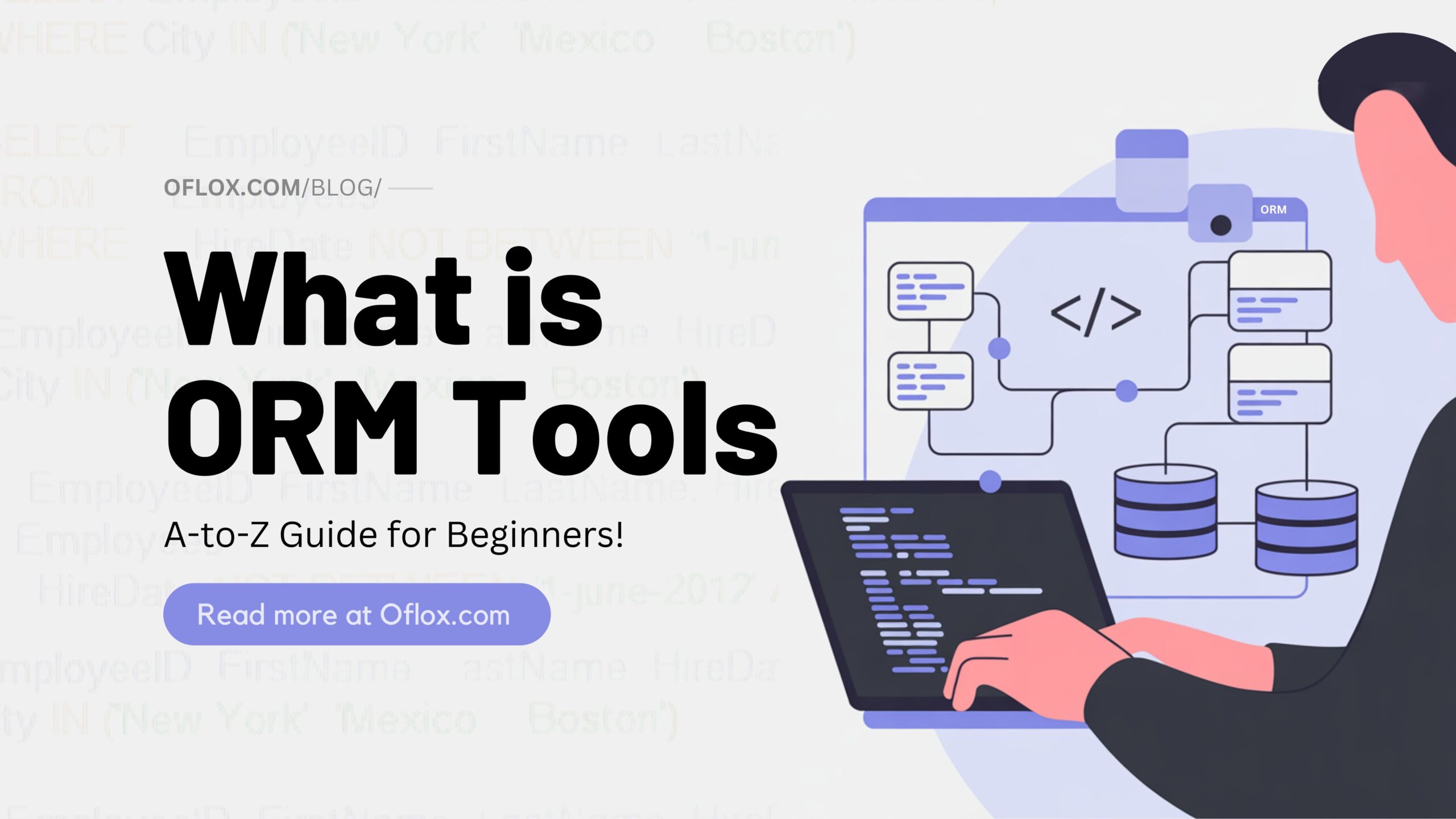This article provides a professional guide on what is ORM tools. If you’re looking to simplify database interactions, write cleaner code, and improve application performance, keep reading for extensive information and advice.
In today’s world of rapid software development, managing databases effectively is crucial. Whether you’re building a mobile app, a web application, or enterprise software, dealing with data is inevitable. That’s where ORM tools come in.

In this article, we’ll explore ORM tools from the ground up, including how they work, why they’re used, which are the best ones, and how they can transform your development process.
Let’s explore it together!
Table of Contents
What is ORM?
ORM stands for Object-Relational Mapping. It’s a programming technique used to convert data between incompatible systems—in this case, object-oriented programming languages and relational databases.
ORM tools allow developers to:
- Work with data as objects, not tables
- Avoid writing complex SQL queries manually
- Automatically generate database queries based on code
- Manage database operations using simple syntax
For example, instead of writing SELECT * FROM users WHERE id = 1;, you can simply use User.find(1) in an ORM-enabled application.
What is ORM Tools?
ORM tools are software libraries or frameworks that implement the ORM technique. They allow developers to interact with the database using their programming language’s objects instead of writing SQL queries manually.
Without ORM:
cursor.execute("SELECT name FROM users WHERE id=1")
With ORM (like SQLAlchemy):
user = session.query(User).filter_by(id=1).first()
print(user.name)
ORM tools simplify and abstract database operations, making your code cleaner, safer, and easier to maintain.
Types of ORM Tools (Language-wise Breakdown)
- Python: SQLAlchemy, Django ORM, Peewee
- Java: Hibernate, EclipseLink
- PHP: Doctrine, Eloquent (Laravel)
- .NET: Entity Framework
- JavaScript: Sequelize, Prisma
Each language ecosystem has multiple Object-Relational Mapping tools designed to make database interactions more seamless.
How ORM Tools Work: Behind the Scenes
ORM tools map database tables to classes and columns to class attributes. They use metadata and configurations to understand how data should be stored and retrieved.
There are generally two approaches:
- Code-first: Define models/classes first, then generate the database schema
- Database-first: Start with an existing database, and generate models from it
ORM Tools vs Raw SQL: Which is Better?
| Feature | ORM | Raw SQL |
|---|---|---|
| Abstraction | High | Low |
| Learning Curve | Medium | Low |
| Flexibility | Moderate | High |
| Productivity | High | Medium |
| Debugging Queries | Sometimes tricky | Easier |
When to use ORM: For CRUD-heavy applications, rapid development, and cleaner code.
When to avoid ORM: For highly complex queries or performance-critical apps.
Pros and Cons of Using ORM Tools
Pros
- Saves Time: No need to write repetitive SQL
- Improved Productivity: Faster development and debugging
- Database Abstraction: Easily switch between databases
- Built-in Security: Helps prevent SQL Injection
- Cleaner Codebase: More readable and maintainable
- Relationship Handling: Manages complex database relationships easily
- Migration Support: Many ORMs support versioned schema changes
Cons
- Performance Issues: Auto-generated SQL may be less efficient
- Learning Curve: Each ORM has its own syntax
- Overhead: May be overkill for simple projects
- Limited Complex Query Support: Some queries are better written manually
- Hidden Operations: ORM may execute unexpected queries behind the scenes
How to Choose the Right ORM Tool
- Language Compatibility: Choose based on your tech stack
- Community Support: Bigger community means better documentation and support
- Project Size: Lightweight ORM for small projects, full-featured ORM for large ones
- Feature Set: Support for migrations, transactions, caching, etc.
Top 5+ ORM Tools You Should Know
- Hibernate (Java): Enterprise-grade ORM used in many Java applications.
- SQLAlchemy (Python) – Best for enterprise Python apps
- Django ORM (Python) – Great for rapid web development
- Sequelize (Node.js) – Best for Node.js developers
- Eloquent (PHP) – Ideal for Laravel projects
- Entity Framework (C#) – Perfect for .NET development
- TypeORM (Node.js/TS) – Great for TypeScript projects
FAQs:)
A. Yes, most popular ORM tools are open-source and free.
A. ORM is better for speed and convenience. Raw SQL is better for performance and fine-tuning.
A. Pick an ORM based on your language and try building a small CRUD app.
A. Yes, many ORMs support multiple databases and switching is easy with minimal config changes.
A. Yes, especially tools like Django ORM and Entity Framework
A. Most ORMs are designed for relational databases. Some ORMs (like Mongoose) are designed for NoSQL like MongoDB.
A. Yes, but use wisely with optimizations.
Conclusion:)
ORM tools are a smart solution for developers looking to simplify database interactions while maintaining clean, object-oriented code. They reduce development time, improve maintainability, and help avoid many security pitfalls. However, it’s important to choose the right ORM tool for your language and use it effectively to get the most benefits.
Read also:)
- How to Develop Tools Like GTmetrix: A Step-by-Step Guide!
- Top 10 DevOps Tools: Tools to Transform Development!
- Top 10 Best BI Tools for Startups: Unlock the Power of Data!
Have you used any in your projects or are planning to explore one soon? Drop your thoughts, questions, or favorite ORM tools in the comments below — we’d love to hear from you!